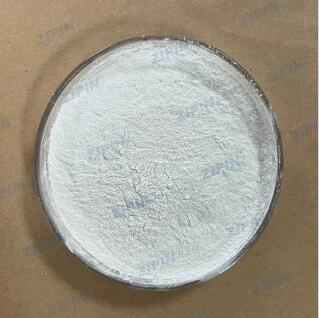Unveiling the Art of Curdlan Extraction: From Microbes to Marvelous Polysaccharide
2024-03-18
Curdlan, a remarkable polysaccharide celebrated for its unique properties and diverse applications, holds a special place in the world of biomaterials. But how is Curdlan brought to life, extracted from its microbial origins, and transformed into a versatile ingredient? Join us on a journey through the fascinating process of Curdlan extraction and production, where science meets innovation to unlock nature's potential.
What is Curdlan?
Curdlan is a linear β-1,3-glucan polysaccharide composed of repeating units of glucose molecules arranged in a specific helical structure. Its exceptional properties, including gelation, thermoreversibility, and biocompatibility, make it a sought-after ingredient in various industries, from food to pharmaceuticals.
Microbial Fermentation: The Key to Curdlan Production
The primary method of Curdlan production involves microbial fermentation, where certain bacteria synthesize Curdlan as an extracellular polysaccharide. Here's a glimpse into the process:
1. Selection of Microorganisms: Curdlan-producing bacteria, such as strains of Agrobacterium, Alcaligenes, or Rhizobium, are selected for their ability to efficiently synthesize Curdlan under controlled fermentation conditions.
2. Inoculum Preparation: A culture of the selected microorganisms is prepared and grown in a nutrient-rich medium to establish a high-density inoculum. This step ensures a robust fermentation process with optimal Curdlan production.
3. Fermentation: The inoculum is then transferred to a larger fermentation vessel containing a suitable medium supplemented with carbohydrates, such as glucose or sucrose. As the microorganisms grow and metabolize the carbohydrates, they produce Curdlan as an extracellular product.
4. Harvesting: Once the fermentation is complete, the Curdlan-containing broth is harvested from the fermentation vessel. Various techniques, such as filtration or centrifugation, may be employed to separate the Curdlan from microbial cells and other impurities.
Purification and Processing
Following harvest, the Curdlan undergoes purification and processing steps to achieve the desired purity and form:
1. Purification: The extracted Curdlan is subjected to purification steps to remove impurities and contaminants, ensuring a high-quality final product. Techniques such as precipitation, chromatography, or solvent extraction may be employed for purification.
2. Drying: The purified Curdlan is then dried to remove excess moisture and form a powdered or granulated product. Drying methods may include spray drying, freeze drying, or air drying, depending on the desired characteristics of the final product.
Quality Control and Packaging
Throughout the extraction and production process, rigorous quality control measures are implemented to ensure the consistency and safety of the Curdlan product. Once the final product is obtained, it is packaged and stored under appropriate conditions to maintain its quality and shelf life.
Conclusion
Curdlan extraction and production represent a harmonious blend of scientific expertise, technological innovation, and environmental stewardship. Through microbial fermentation and careful processing, nature's bounty is transformed into a versatile ingredient that enriches a myriad of products across industries. As the demand for sustainable and functional ingredients continues to grow, Curdlan's journey from microbe to marvel underscores its importance in shaping the future of biomaterials and beyond.



